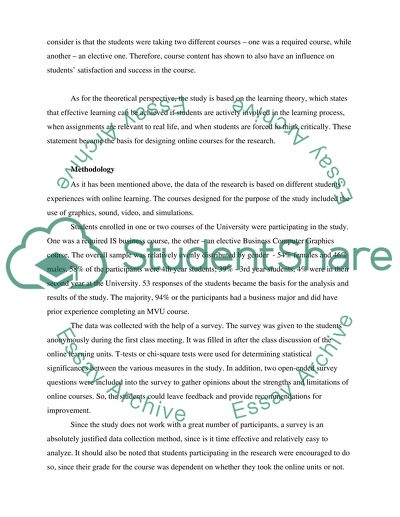Cite this document
(Analysis of Student's Perception of Online Learning Research Assignment, n.d.)
Analysis of Student's Perception of Online Learning Research Assignment. Retrieved from https://studentshare.org/education/1590699-write-a-critique-on-students-perception-of-online-learning-a-comparative-study-karl-l-smart-james-j-cappel
Analysis of Student's Perception of Online Learning Research Assignment. Retrieved from https://studentshare.org/education/1590699-write-a-critique-on-students-perception-of-online-learning-a-comparative-study-karl-l-smart-james-j-cappel
(Analysis of Student'S Perception of Online Learning Research Assignment)
Analysis of Student'S Perception of Online Learning Research Assignment. https://studentshare.org/education/1590699-write-a-critique-on-students-perception-of-online-learning-a-comparative-study-karl-l-smart-james-j-cappel.
Analysis of Student'S Perception of Online Learning Research Assignment. https://studentshare.org/education/1590699-write-a-critique-on-students-perception-of-online-learning-a-comparative-study-karl-l-smart-james-j-cappel.
“Analysis of Student'S Perception of Online Learning Research Assignment”, n.d. https://studentshare.org/education/1590699-write-a-critique-on-students-perception-of-online-learning-a-comparative-study-karl-l-smart-james-j-cappel.


